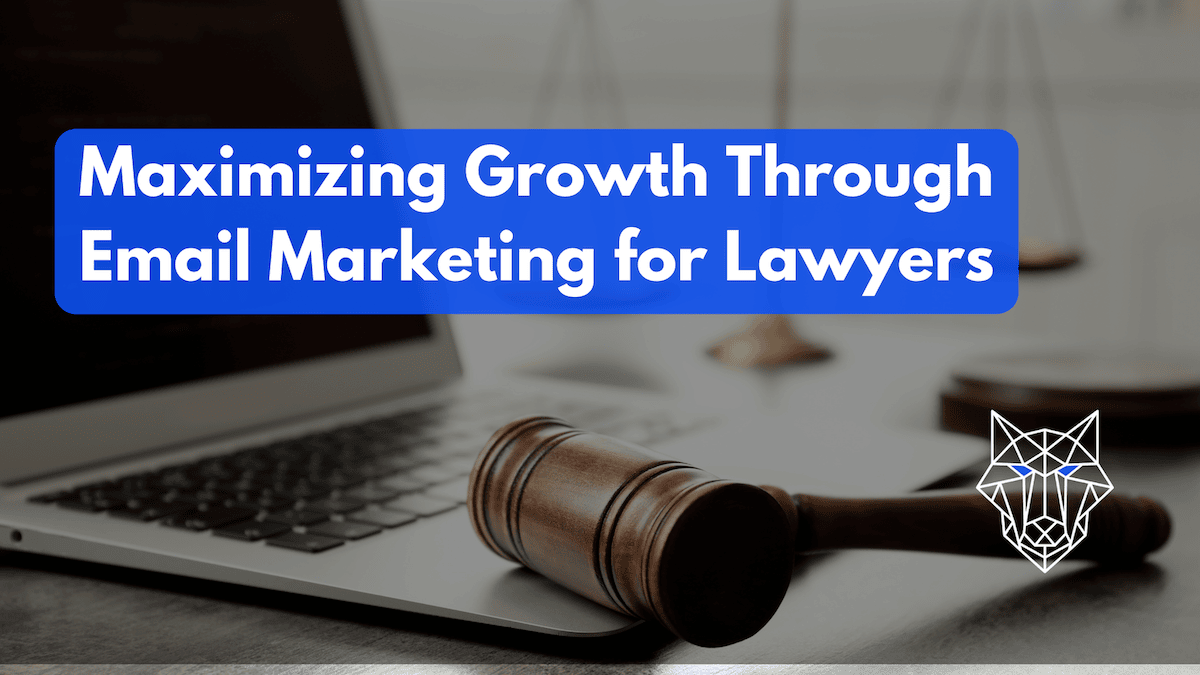Email marketing is a potent tool for lawyers to expand their reach and engage potential clients.
The emergence of in-house marketing departments in large firms highlights the transformative role of marketing within the legal industry. In this blog, we will uncover the remarkable potential of email marketing, where a 2019 survey revealed an astonishing average ROI of 4,200%.
Let’s take a look at how to harness the advantages of email marketing and why you need it to help your law firm stand out from the rest!
Build Your Email List
Building a successful email marketing strategy doesn’t have to be complicated, especially for lawyers. It all starts with a strong contact list. Now, you might be tempted to buy an email list and get started right away, but let’s pump the brakes on that idea. Purchased email lists can lead to unsolicited emails, and nobody wants to be marked as spam, right?
Instead, consider creating your own opt-in email list. They’re not only safer but also more effective. By building your own list, you’ll likely see higher open and click-through rates, which is what we’re aiming for. Learn other email acquisition strategies.
How To Do It
- Online Registration Form: For instance, if you run a law firm specializing in corporate law, you could add a sign-up form on your website’s homepage or blog section. This form could invite visitors to subscribe for regular updates on changes in corporate law, legal tips for businesses, and more.
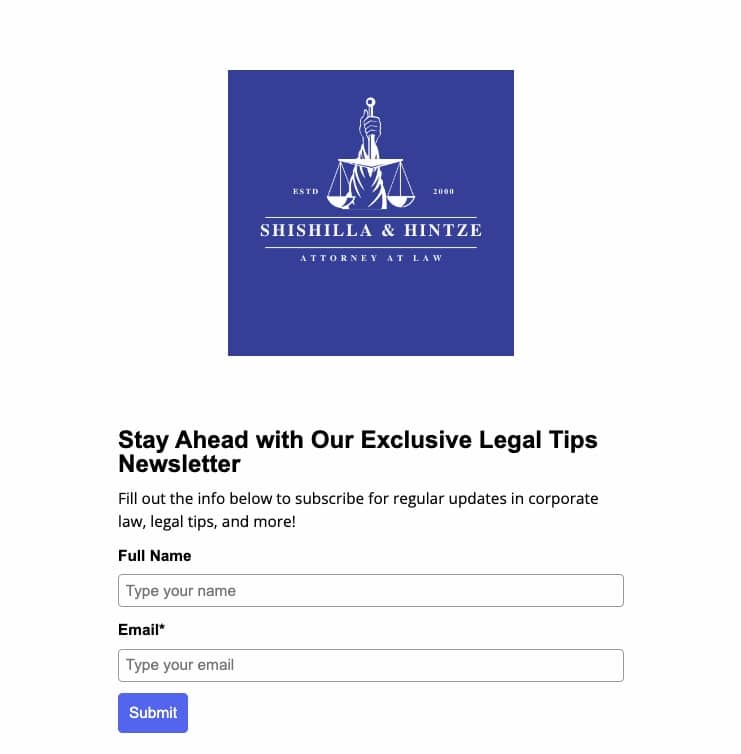
- Webinar Sessions: As an example, you could host a webinar titled “Understanding the Legal Implications of Starting a Business.” During the registration process for this webinar, you could ask attendees to provide their email addresses to receive further information and updates on similar topics.
- High-Quality Content: If you’re a tax lawyer, you could offer a free ebook titled “Navigating Tax Laws for Small Businesses” in exchange for visitors’ contact details. This way, they get valuable information that can help them manage their business taxes better, and you get their email address for future engagement.
- Social Media Platforms: On your social media platforms like LinkedIn or Facebook, you could add a ‘Subscribe’ button on your page. This button could lead to a form where interested followers can sign up for your newsletter or updates. For instance, if you have a listing in a lawyer directory, ensure there’s an option for potential clients to subscribe to your updates directly from your profile.
- Lead Generation Landing Page: For instance, if you’re a family lawyer, you could create a landing page titled “Stay Updated on Family Law Changes.” On this page, you could outline the benefits of subscribing, such as receiving regular updates on changes in family law, tips for navigating legal issues related to family matters, and exclusive invites to webinars or events. You can then add a signup button linking to this page on your Facebook Business Page or LinkedIn Organization Page, and include a link in your Instagram or Twitter bio.
Strategically Organize Your Audience Into Lists
Law practices cater to a wide spectrum of clients, each with unique and specific needs. Whether your law firm focuses on various practice areas or has a niche specialization, you are likely to interact with clients who have a range of interests and requirements.
Email marketing provides a powerful means to tailor your communication to these diverse audiences, irrespective of the scale of your legal practice. In fact, according to a study by Campaign Monitor, marketers have noted as much as a 760% increase in revenue from segmented campaigns. By segmenting your audience into distinct groups, you can ensure that the messages you send are highly relevant and resonate with the recipients.
How To Do It
Consider the following scenario for your practice. You may choose to segment your audience based on their geographical location, such as city or country. Alternatively, you could segment them based on their areas of interest, such as real estate law, family law, or corporate law. Another effective method is to segment them based on where they are in the client journey, such as potential clients, new clients, or long-term clients.
Audience segmentation is crucial for achieving personalization. It involves creating groups of subscribers who share similar needs and interests. It’s advisable to start with a small number of audience segments, perhaps two to three, and gradually expand them through practice and experimentation.
Fortunately, there are numerous email marketing tools available that can assist with this process, so there’s no need to do everything manually! Segmenting by practice area is a practical and efficient starting point.
We recommend using marketing automation software to alleviate much of the manual labor involved here.
Craft Email Campaigns For Lawyers And Schedule One-off Messages
Now, it’s time to embark on the journey of crafting your email messages.
Keep in mind that the objective extends beyond mere service promotion; it’s about delivering substantial value and nurturing relationships. Successful email marketing for lawyers is a continuous endeavor. It involves maintaining a consistent presence and providing your subscribers with valuable, sought-after information. To accomplish this, you’ll need to create email campaigns, which are a series of messages delivered in a specific sequence.
Your initial campaign should be the “Welcome Campaign.” Begin by configuring automated messages to extend a warm welcome to new subscribers. After a brief interval, follow up with another email containing links to your social media platforms, encouraging recipients to stay updated with your regular insights.
It’s important to note that the first set of emails merely marks the inception of the email marketing journey as lawyers. Your email calendar should include periodic outreach to your entire list, aiming for at least one communication each month, although the timing need not be uniform.
To illustrate, consider this scenario: A law firm specializing in family law sends a monthly newsletter to its subscribers. Each edition covers legal developments, shares success stories, and offers tips for managing family-related legal matters. By maintaining this regular contact and delivering content of genuine interest, the law firm not only imparts value to its subscribers but also nurtures lasting client relationships.
How To Do It
- Tailor your email content: Personalize your emails to cater to the interests and needs of your audience. This approach shows that you value their individual preferences and increases the chances of engagement.
- Consider timing and automation: Use automation tools to schedule your emails for optimal readership. This way, you can reach your audience at the most convenient times and enhance your chances of capturing their attention.
- Create a branded template: Develop an email template that aligns with your website and social media branding. Consistency in design elements and messaging reinforces your brand identity and helps establish recognition among recipients.
- Customize your newsletter’s template: Enhance your newsletter’s template with personal touches like images and layout changes for a visually appealing and engaging design. By doing so, you can enhance the overall impact of your messages.
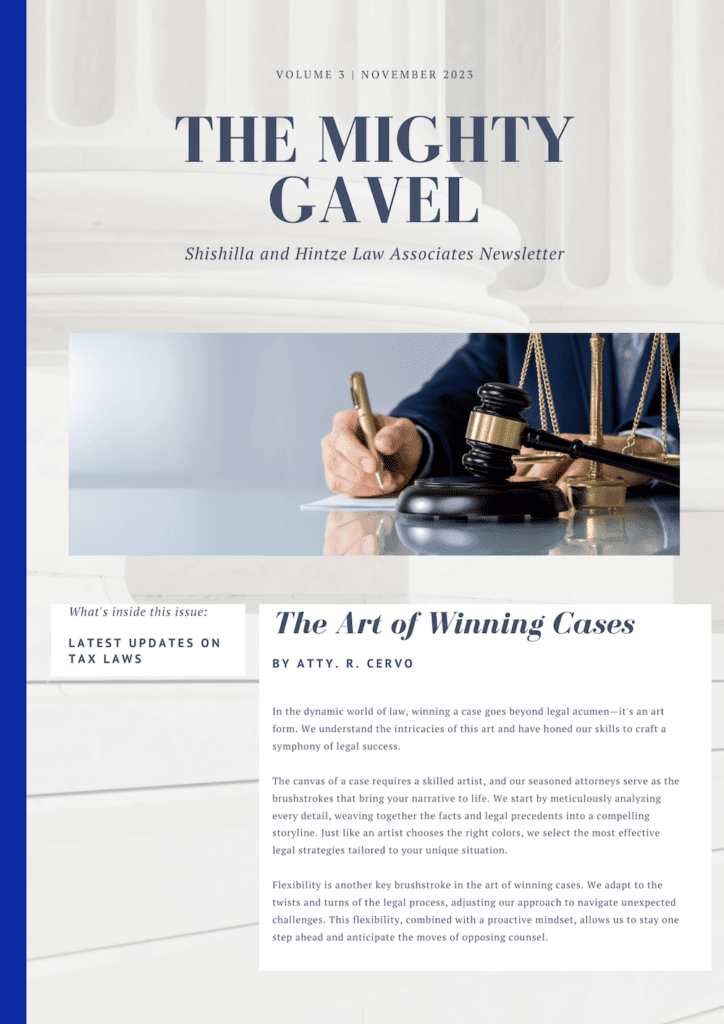
- Implement various email strategies: Move beyond just a welcome campaign. Explore different email strategies like drip campaigns, which involve a sequence of automated emails triggered by specific subscriber actions. This approach keeps subscribers engaged and nurtures them throughout their customer journey
Example drip campaign for a personal injury practice:
- Email 1: Thank the subscriber for their interest and provide a brief introduction to your law firm’s expertise in personal injury cases. Include testimonials or success stories to establish credibility.
- Email 2: Share important information about the legal process for personal injury claims, explain common misconceptions, and highlight the benefits of seeking professional guidance.
- Email 3: Provide educational content, such as articles or videos, related to personal injury topics. Offer practical tips for accident prevention or advice on what to do immediately after an incident occurs.
- Email 4: Introduce case studies showcasing successful outcomes from past personal injury clients. Emphasize the value of legal representation and the potential compensation available.
- Email 5: Offer a free consultation or case evaluation to encourage potential clients to take the next step. Provide clear instructions on how they can get in touch and emphasize the benefits of seeking professional legal guidance.
Create A Newsletter Layout
Subject lines are the gateway to engaging your audience. Take, for example, our recent newsletter with the subject line “The Art of Winning Cases.” Just like a captivating headline, it beckons recipients to explore the intricate brushstrokes of legal success within.
Best email practices emphasize compelling subject lines, effective design, and valuable content for an engaging combination that captivates your audience. In the same way “Latest Updates on Tax Laws” intrigues tax enthusiasts, our subject line promises a journey into the artistic realm of legal triumphs. Craft your subject lines with care, and watch as your audience eagerly opens the door to the masterpiece you’ve created for them.
Craft subject lines with relevant information to boost the chances of recipients opening and engaging with the email content. A subject line like “Important Changes in Tax Laws You Should Know” is more likely to be opened than a vague one like “Monthly Newsletter.”
How To Do It
Let’s say you’re a family law attorney. Start by designing an email template that reflects your practice’s brand and professionalism. Once this is done, it’s time to fill it with valuable content.
Start by sharing updates on key family law changes, like new child custody regulations or landmark divorce cases. Supplement these updates with your expert analysis to provide context and insight for your readers.
Next, address common queries from both existing and prospective clients. For example, you might answer questions about the divorce process, child custody disputes, or recent changes in family law.
Consider offering rewards to subscribers who bring new clients to your firm or encourage others to join your mailing list. This could be a discount on consultation fees or exclusive access to in-depth articles on family law topics.
Lastly, keep your audience updated on local happenings that may impact them. Share news such as the opening of a new family counseling center or changes in local government policies affecting families. This not only keeps your readers informed but also shows your engagement with the community. Craft your subject lines with care, and watch as your audience eagerly opens the door to the masterpiece you’ve created for them.
In this blog, we have covered how to have an effective email newsletter
Continuously Assess and Enhance Performance

You can’t improve what you don’t measure, right? So make sure you’re keeping track of how your emails are performing.
Email marketing tools provide extensive data and metrics to assess the performance of your email campaigns. According to a recent study, marketers who use segmented campaigns note as much as a 760% increase in revenue. It is essential to closely monitor these metrics and continuously strive to enhance the ones that you select for tracking.
A/B testing is a valuable technique for identifying what is effective and where improvements may be needed in your email content and strategies. This method allows you to compare different versions of your email campaigns and determine which one performs better based on key performance indicators. In fact, A/B testing can increase conversion rates by up to 49%.
How To Do It
- Analyze Open Rates: Keep a close eye on your open rates as they indicate how compelling your subject lines and email content are. Also, take into account the email’s placement within the recipient’s inbox. Emails that land in the primary inbox tend to have higher open rates than those in secondary tabs. Ensure emails reach the primary inbox, avoid spam complaints, manage email volume, and optimize content for relevancy. Learn how to stop your emails from landing in spam and cut down on spam complaints.
- Evaluate Click-Through Rates: Let’s say you run a law firm specializing in various legal services. In January, you sent out an email newsletter featuring your services in corporate law and noticed a CTR of 2%. However, in February, when you sent out an email highlighting your expertise in family law, the CTR jumped to 5%. This increase indicates that your audience is more interested in your family law services than your corporate law services.
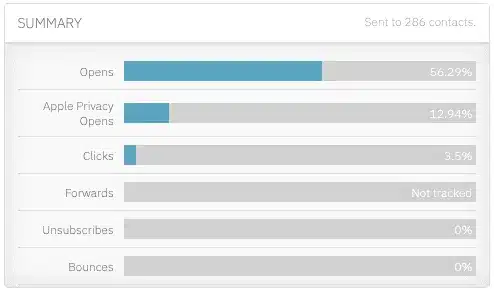
- Utilize Metrics for Improvement: As lawyers, optimize your email marketing strategy, it’s crucial to leverage the data from open and click-through rates. This data can provide valuable insights into what content resonates with your clients or potential clients. For instance, if you notice a higher open rate for emails with subject lines related to a specific legal topic, such as “Updates on Personal Injury Laws”, it indicates that your audience is interested in this particular subject. Similarly, a high click-through rate on emails about “Free Legal Consultation Offers” suggests that these offers engage your audience effectively. Use these insights to pinpoint email topics and subject lines that garner more opens and engagement.
- Implement A/B Testing: In your law practice, it’s crucial to experiment with different elements in your emails through A/B testing. This method allows you to compare the performance of two variations of an email. For instance, you could test two different subject lines: “Legal Services Offered” versus “Protect Your Rights with Our Legal Assistance”.
Regularly Refine Your Strategy:
To ensure effective email marketing for lawyers, it is vital to make performance assessment and refinement a regular practice. By continuously tracking the performance of your email campaigns, you can gain valuable insights and adjust your strategy accordingly.
Remember to regularly evaluate important metrics such as open rates, click-through rates, conversion rates, and engagement levels. Analyzing metrics helps pinpoint areas for improvement, guiding data-driven decisions to enhance your email marketing strategy as a lawyer.
Consistently Monitor and Adjust: As a lawyer, it’s crucial to capitalize on the data and insights from your email marketing analytics to make data-driven decisions.
If legal update newsletters receive higher engagement on Wednesdays, schedule them for maximum impact on that day. Tailoring content to your audience’s preferences ensures optimal timing, maximizing engagement and impact.
If case study emails perform better with outcome-focused subject lines, stick with this winning strategy for optimal engagement.
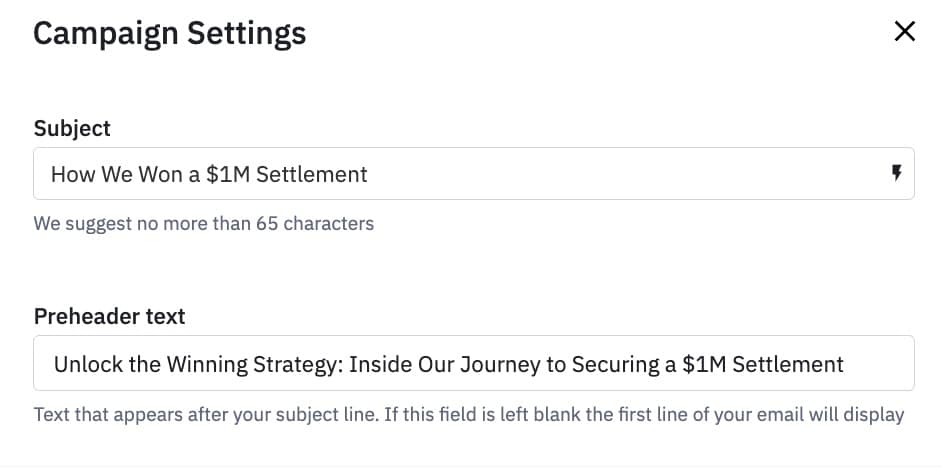
Consistently fine-tune your email content, subject lines, and sending times for maximum engagement, fostering client connection, service updates, and growth.
Vigilantly Monitor Legal Compliance
As lawyers, it is crucial to adhere strictly to regulations and laws regarding email marketing. Two key regulations that you must comply with are the CAN-SPAM Act and the GDPR. For instance, under the CAN-SPAM Act, misleading header information and subject lines are prohibited. Therefore, as a lawyer, you should ensure your emails clearly state they are for marketing purposes and accurately reflect the content of the email.
Under GDPR, consent is a critical aspect. You should only send marketing emails to individuals who have explicitly opted in to receive them. For example, if someone fills out a contact form on your law firm’s website, this does not automatically give you permission to add them to your marketing email list. They must expressly agree to receive marketing emails from you.
In every email, include your business name and address to provide transparency. Also, always provide an easily accessible and conspicuous method for recipients to unsubscribe from your mailing list. This could be a simple, clear link at the bottom of your emails.
Lastly, choose an email marketing platform that offers information on compliance and features that align with these legal requirements.
This will help you navigate the complexities of email marketing as a lawyer and ensure your practices are compliant.
Conclusion
Email marketing is a powerful tool for lawyers, offering a remarkable average ROI of 4,200%. Building your email list with opt-in subscribers and segmenting your audience based on their interests is the foundation.
Crafting engaging email campaigns, such as welcome emails and newsletters, and continuously refining your content and strategies is essential.
Monitoring key metrics and implementing A/B testing to optimize performance is crucial. Always ensure legal compliance with regulations like the CAN-SPAM Act and GDPR.
If this is something you are unsure of how to do, schedule a consultation with us. We can help with this process, website design, and many other services!


